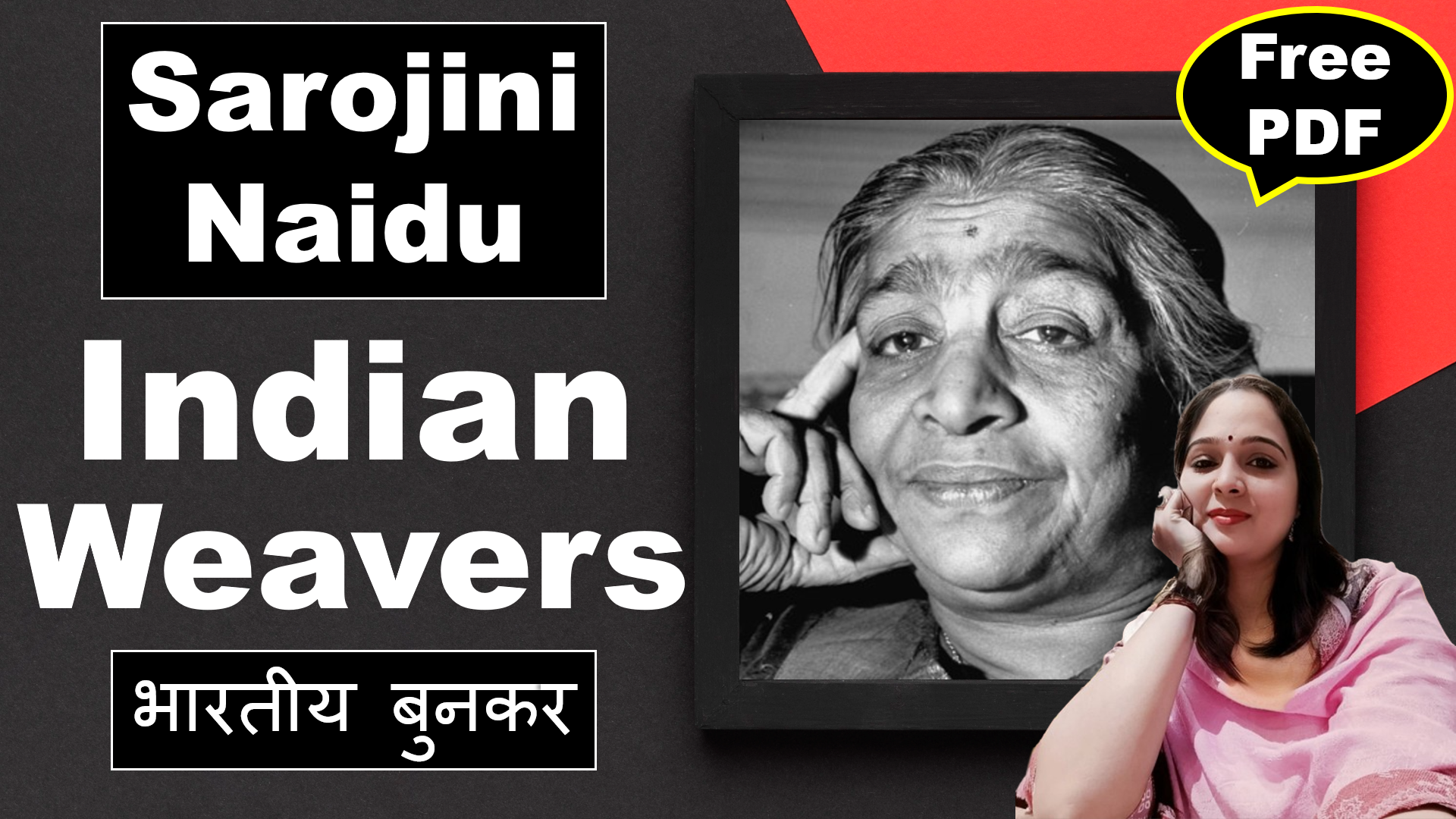Word Meaning
| Line | Word | Meaning | अर्थ |
| 1 | Weavers | People who weave cloth. | बुनकर |
| 1 | Break of day | The beginning of the day. | दिन की शुरुआत |
| 2 | Garment | A piece of clothing | परिधान |
| 2 | Gay | Bright and colorful | हर्षित |
| 3 | Halcyon | A type of bird with bright blue plumage. | किंगफिशर |
| 3 | Wing | The limb of a bird that is used for flying | पंख |
| 4 | Robes | Loose, flowing garments | वस्त्र |
| 5 | Fall of night | Late night | रात ढलने |
| 6 | Bright | Full of light | चमकदार |
| 7 | Plumes | The long, soft feathers of a bird | पंख |
| 8 | Marriage-veils | Veils worn by brides on their wedding day | विवाह घूंघट |
| 9 | Solemn | Serious and dignified | गंभीर |
| 9 | still | Silent and motionless | शांत |
| 10 | Moonlight | The light of the moon | चांदनी |
| 10 | chill | A cold feeling | ठंड |
| 11 | Feather | A soft, light-weight plume that covers the body of a bird | पंख |
| 11 | Cloud | A mass of visible water droplets suspended in the atmosphere | बादल |
| 12 | Funeral shroud | A cloth that is used to cover a dead body before it is buried or cremated. | कफन |
Indian Weavers Poem Summary
The poem “Indian Weavers” by Sarojini Naidu is a beautiful and moving depiction of the different garments that Indian weavers weave for different occasions. The poem also conveys a sense of the deep connection between Indian culture and weaving.
The poem begins with a description of weavers working at the break of day to weave a blue garment for a new-born child. The blue color of the garment symbolizes new life and beginnings.
The second stanza of the poem describes weavers working at the fall of night to weave a bright and colorful garment for a queen’s wedding veil. The bright colors of the garment symbolize love and celebration.
The third and final stanza of the poem describes weavers working in the moonlight chill to weave a white garment for a dead man’s funeral shroud. The white color of the garment symbolizes death and mourning.
The poem is a celebration of the skill and artistry of Indian weavers, and it also conveys a sense of the deep connection between Indian culture and weaving. The poem also reminds us of the cycle of life and death, and that all life is precious.
Key Points
Author: The poem is written by Sarojini Naidu, a renowned Indian poet and political rights activist1. She is remembered for promoting women’s emancipation through her work and her writing.
Form: This poem is written in the form of quatrains, each with two rhyming couplets. The poem is written in iambic tetrameter, owning rhyme scheme aabb, ccdd, and eeff, respectively.
Speaker: The speaker in the poem alternates between an observer and the weavers themselves.
Setting: The poem introduces an Indian scene, that of weavers, weaving, particularly in the country-side, cloth on handlooms in different coloured patterns.
Theme: The central theme of the poem is the passage of life and eventual death. The poem represents the three stages of human life: birth, youth, and death.
Plot: The poem describes how a group of weavers make three different garments, each representing a different stage of human life: a blue garment for a newborn child, a green and purple marriage veil for a queen, and a white shroud for a dead man.
Tone: The tone of the poem is grief and hope. The poem encompasses a person’s entire existence. The metaphor of weaving powerfully conveys the joy and sorrow of creation.
Style: The poem’s style is compelling, with each stanza beginning with a question to pique the reader’s interest. The poem is symbolic; rather allegorical, since it is only a thought, rather than an experience.
Message: The message of the poem is clear: The poem symbolically represents the cycle of life and death, with the Fates weaving the threads of each stage.
Sarojini Naidu
Birth and Early Life: Sarojini Naidu was born on February 13, 1879, in Hyderabad, India.
Family: She was born into a well-respected Bengali family. Her father, Aghorenath Chattopadhyay, was a linguist and the principal of Nizam College.
Education: Naidu passed her matriculation examination to qualify for university study, earning the highest rank, in 1891, when she was twelve.
Works: Naidu is known for her volumes of poetry in English, including “The Golden Threshold” and “In the Bazaars of Hyderabad”. Her oeuvre includes both children’s poems and others written on more serious themes including patriotism and tragedy.
Political Career: Naidu played an important role in the Indian independence movement against the British Raj. She was the first woman to be president of the Indian National Congress and to be appointed as governor of a state.
Contributions: Naidu’s literary work as a poet earned her the nickname the “Nightingale of India” by Mahatma Gandhi because of the colour, imagery and lyrical quality of her poetry.
Death: Sarojini Naidu passed away on March 2, 1949.










